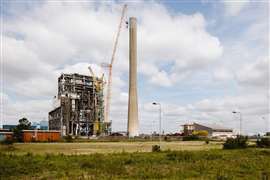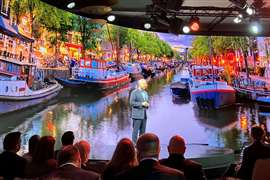More than oil
17 March 2008
Middle Eastern construction markets continue to prosper, driven in many cases by the wealth generated from high oil and energy prices. Although construction will slow from the +9.9% compound growth seen over the past five years, it is still expected to expand at a +7.0% compound rate over the next five years. These are real growth rates - nominal growth will be even higher as inflationary pressures are beginning to be felt in several of the region's major economies.
The larger story is the impact of diversification on the construction markets of the Middle East. Despite high prices, oil production is on a gradual downward trend for many nations, with investments being made for a less oil-dependent future.
After expanding at better than a +7% real rate over the past five years, construction spending on petroleum refining is expected to increase at less than +4% over the next five. Dubai's economic success, which has come despite having insignificant oil reserves, is encouraging not only other emirates, but also other nations, to follow similar economic strategies.
Abu Dhabi, Sharjeh and Ras Al Khaimah are undertaking market-oriented economic reforms to attract more foreign investment. Oman, another country with limited oil resources, is paying the most attention to economic diversification than any other Gulf Cooperation Council (GCC) member. It is developing its liquefied natural gas production and export capabilities as an alternative to oil, as well as growing its petrochemical, manufacturing and tourism industries.
Infrastructure
While construction spending is decelerating overall, growth will still be strong, particularly in the infrastructure sector. This segment is broadly composed of energy, transportation and water/sewer project. The driving force behind declining rates of growth is the energy sector, which expanded at more than +16% in recent years, but is projected to slow to less than +7% growth over the forecast. The transportation and water/sewer elements will do relatively better as the region develops the road, port and airport networks required by more service-oriented economies.
While the United Arab Emirates (UAE) has attracted the most attention with its signature architectural and engineering marvels, it is Kuwait that offers perhaps the surprise potential. Strong government spending on development and infrastructure projects will continue, with US$ 22 billion being invested in oil sector expansion alone between 2006 and 2008.
Energy is not the focal point of construction spending, however, with large infrastructure projects, including port development also underway or on the way. In addition, a free-trade zone near the Iraqi border, various petrochemical projects and various hospitals and stadiums are also in the pipeline over the next ten years.
High profile
Qatar is also engaged in large-scale, prestige projects funded by oil revenues, and like Oman, it is increasing production capacity for liquefied natural gas to augment its depleting oil reserves. Indeed, it is the natural gas sector that will be the main growth driver for the economy, although strong domestic demand and a growing financial services sector also bode well for the long term outlook.
Israel, by contrast, lags in virtually all construction spending categories. A lack of oil wealth and the existence of an already advanced, diversified economy are two reasons for the slow rate of growth. Israel is also particularly vulnerable to the US economic performance, since the US is both the state's largest export market and a significant source for investment, particularly into the high-tech sector. A period of very slow growth and a renewed focus on credit risk for the US diminishes the outlook for Israeli economic expansion.
The outlook for Iran is fraught with the most risk. Potentially increased economic sanctions could worsen growth prospects more than currently anticipated. The current government remains dedicated to investment in infrastructure, industrial and energy projects, despite concerns over inflation and poor fiscal discipline.
The nuclear stand off between Iran and the West has reduced foreign direct investment to only projects with short-term construction horizons and quick returns. Nevertheless, Iran's oil wealth allows for significant public financing and as long as diplomatic discussions stay on track, the construction market should expand at a strong pace, although many Western companies may find themselves unable to participate.
Finally...
No overview of the Middle East would be complete without Saudi Arabia. The oil production leader is expected to see a -3% drop in oil output in 2007. However, the non-oil sector is more than primed to compensate in construction activity.
Several large-scale ‘economic cities' are currently under construction to provide residential and commercial units for a population up to 100000 people. Steady growth of oil revenues has boosted the fiscal confidence of the Saudi government and fiscal spending is on the rise. Recent economic and legal reforms have also created a more favorable environment for private investment, and the kingdom's proven resolve in controlling domestic terrorism has improved perceived financial security.
STAY CONNECTED


Receive the information you need when you need it through our world-leading magazines, newsletters and daily briefings.
CONNECT WITH THE TEAM










